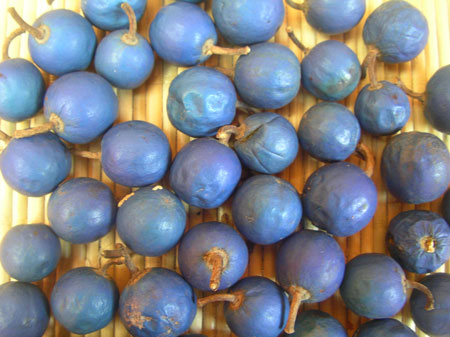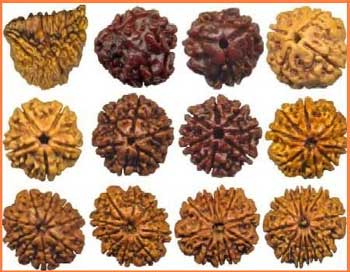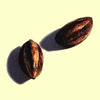Ganitri (Rudraksha) Fruits
Elaeocarpus is a genus of tropical and subtropical evergreen trees and shrubs. The approximately 350 species are distributed from Madagascar in the west through India, Southern China, Nepal, Indonesia, Malaysia, Myanmar, Thailand, Australia and Pacific Islands (Fiji, Solomon). Around 70% of the Ganitri trees are found in Indonesia. However, 15%-20% of the commercially grown plants are found growing in Nepal and Uttar Pradesh, India."
Elaeocarpus ganitrus is commonly called Rudraksha Tree in India, also called Ganitri Tree or Jenitri Tree in Indonesia. Its English name is Utrasum Bead Tree. This plant produces seeds known as Rudraksha, Ganitri or Jenitri. The seeds have been traditionally considered sacred in Hinduism as they are believed to be the tears of the shiva. In Sanskrit, rudra means shiva and aksh means eye. The dried seeds are used used as rosary beads and necklaces for meditation purposes.

The above picture shows the fruits of Elaeocarpus ganitrus. They were harvested from scattered trees in my town. In Indonesia, Ganitri tree flowers between August to September and fruits between September to November. Inside each fruit there is one seed that look like this:

Rudraksha beads have been used for thousands of years as an aid to self empowerment and the self enlightment. Hindus believe that rudraksha beads have healing properties and that they affect the human body when worn. Other sources also mention that Rudraksha beads are dielectrical as they store electrical energy and also possess electromagnetic properties changing with the variation in the number of faces on the beads. These faces are called "mukhis", ie clefts on the surface of the beads. The number of mukhis on the surface of a rudraksha bead helps in determining its quality. According to the number of mukhis the rudrakasha bead ranges from single face to a several faced bead. Asian yogis and monks found that merely wearing the rudraksha beads gave them astonishingly tremendous amount of tranquility, concentration that helped them meditate for a long period of time with spectacular control over their mind.


0 Comments
Recommended Comments
There are no comments to display.
Create an account or sign in to comment
You need to be a member in order to leave a comment
Create an account
Sign up for a new account in our community. It's easy!
Register a new accountSign in
Already have an account? Sign in here.
Sign In Now